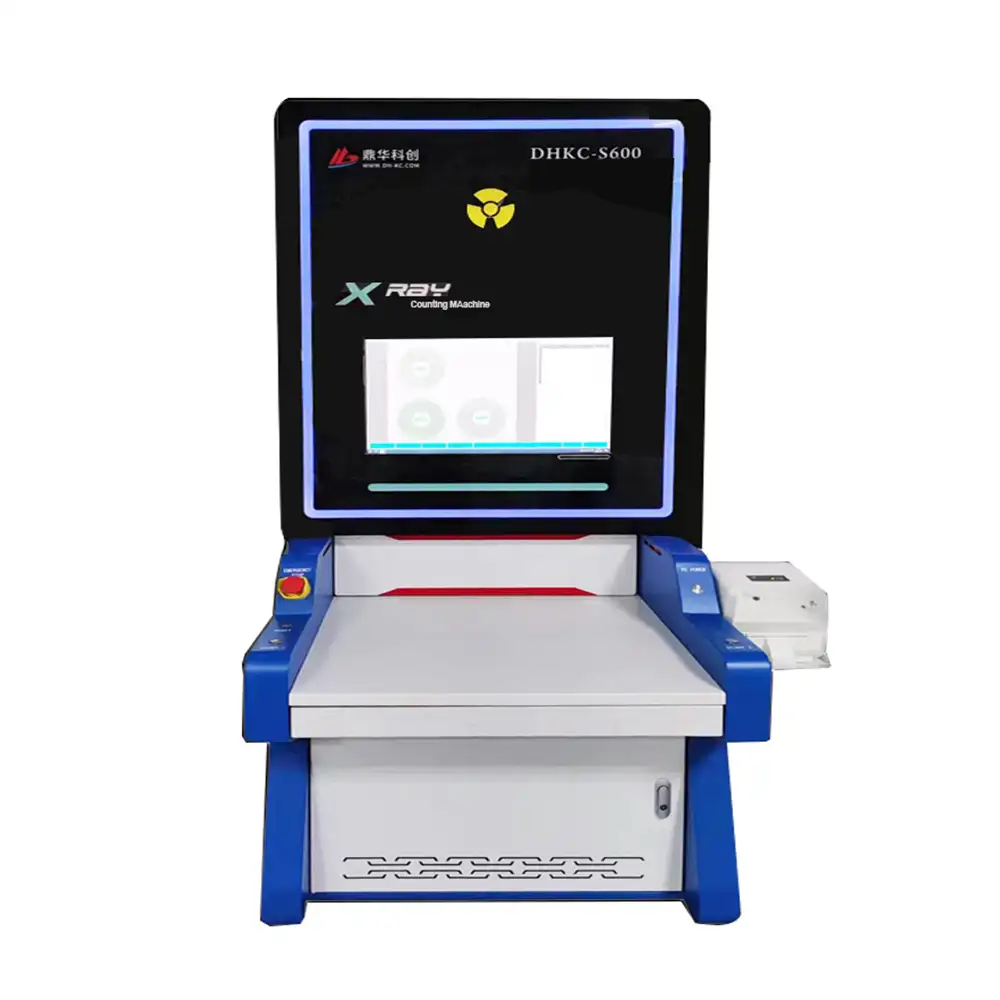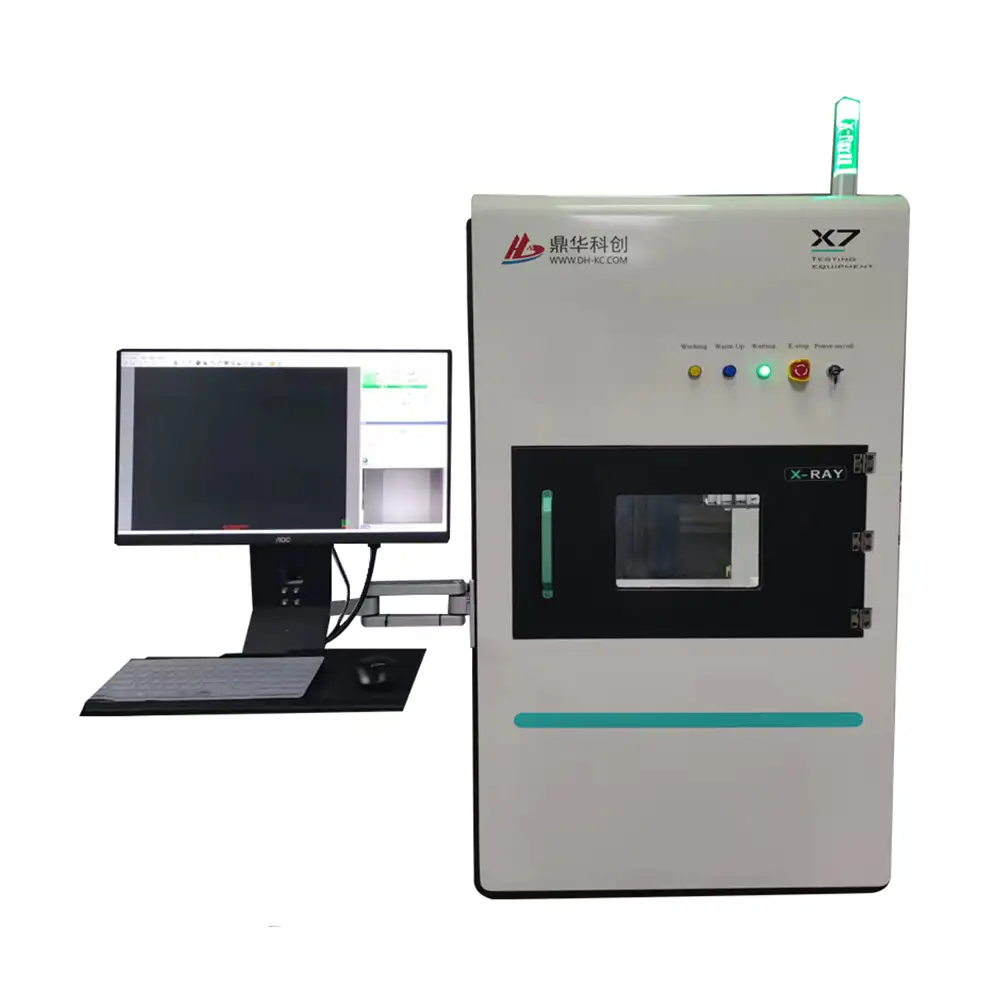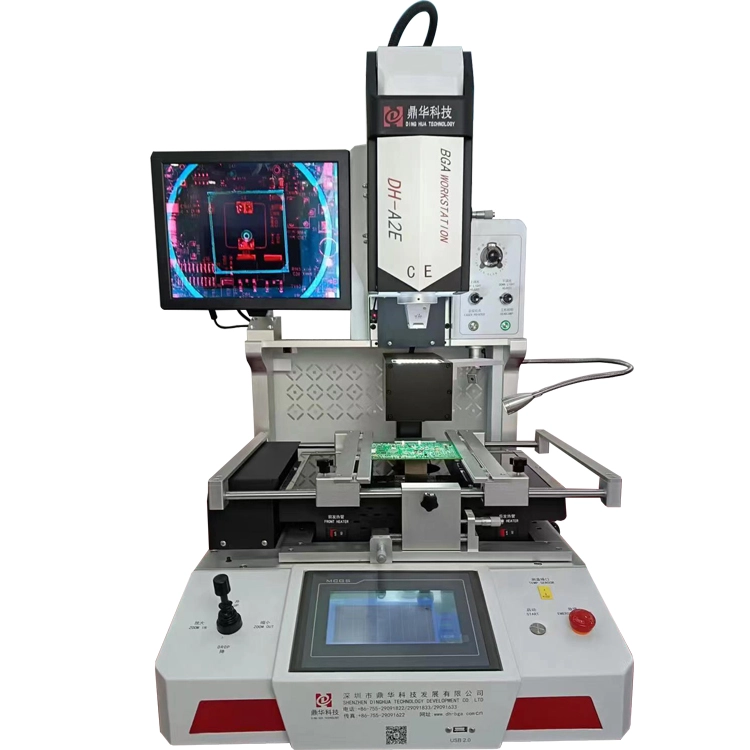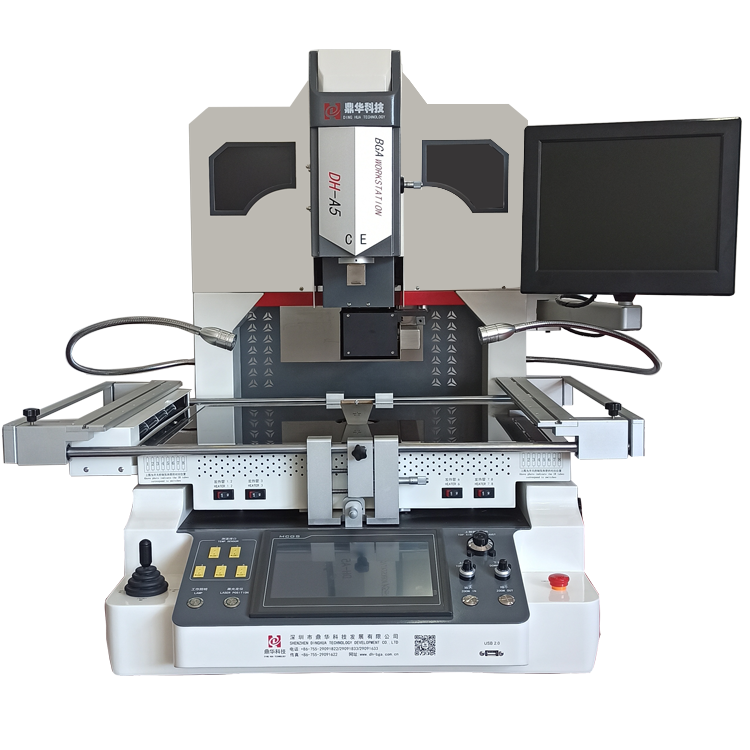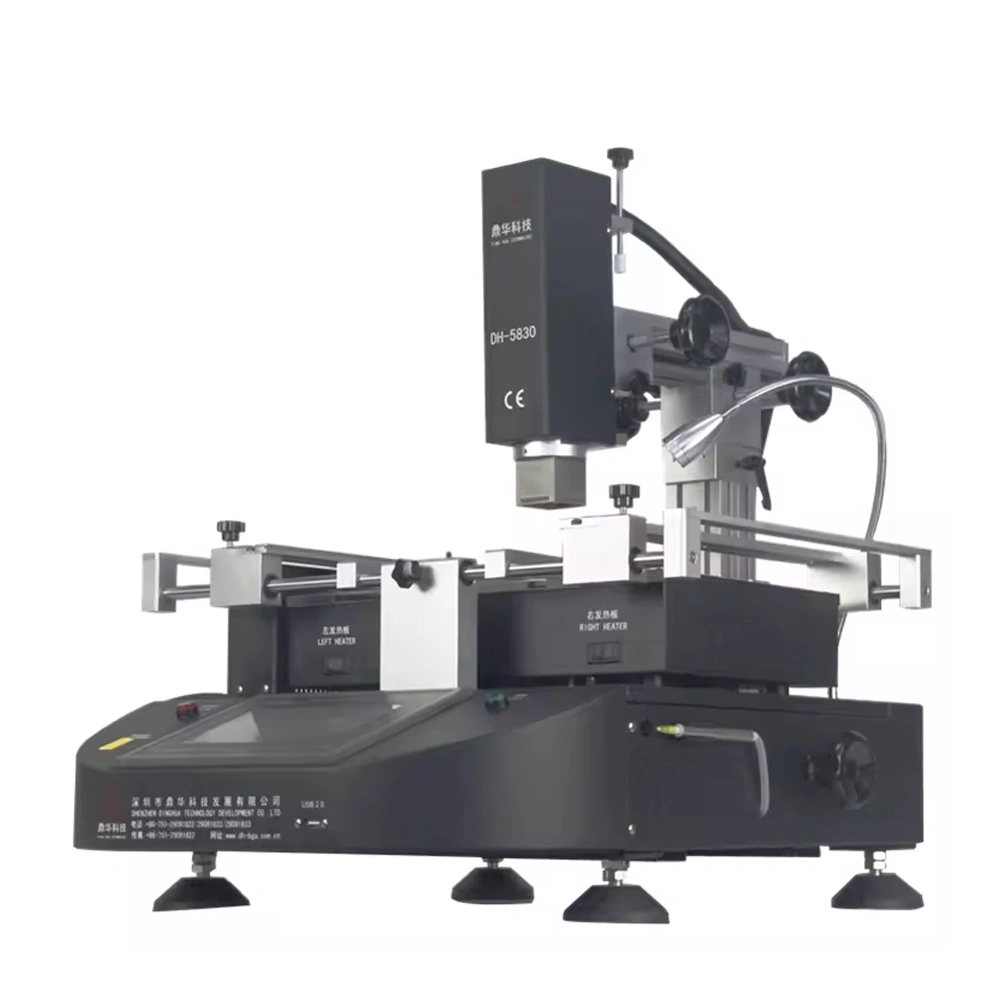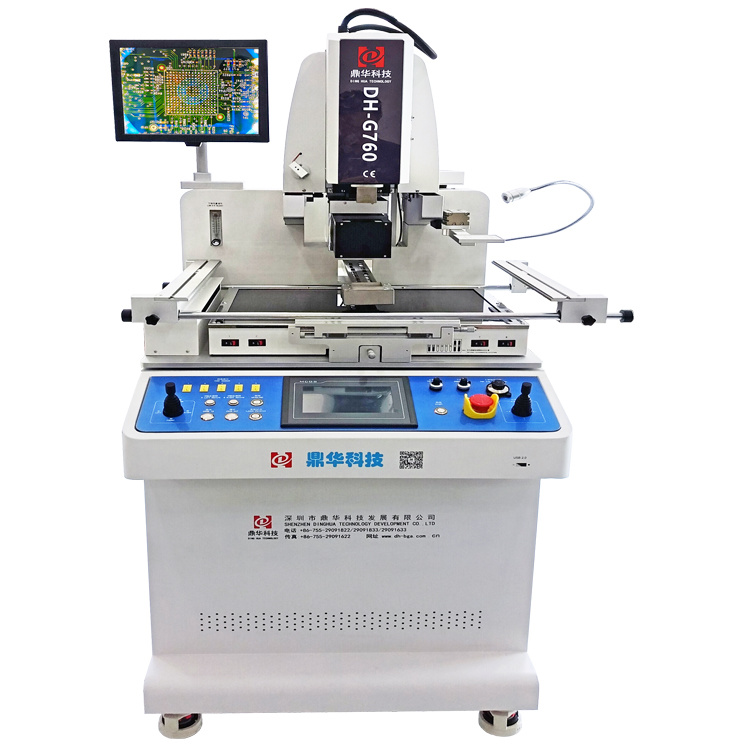Professional Equipment Manufacturer
 Esperanto
Esperanto
 Shqiptare
Shqiptare
 Euskara
Euskara
 Zulu
Zulu
 Latinus
Latinus
 Cymraeg
Cymraeg
 தமிழ்
தமிழ்
 Slovak
Slovak
 Slovak
Slovak
 Afrikaans
Afrikaans
The Ultimate Guide to Choosing the Right Automatic BGA Rework Station
2025-07-02
The Ultimate Guide to Choosing the Right Automatic BGA Rework Station
Introduction to BGA Rework Stations
In the world of electronics manufacturing and repair, **Ball Grid Array (BGA)** components require specialized attention. The automatic BGA rework station is an indispensable tool, enabling technicians to efficiently repair, replace, and rework BGA components on PCBs (Printed Circuit Boards). With the right station, businesses can enhance productivity, reduce costs, and ensure high-quality results.
Understanding the Basics of BGA Technology
Before diving into the selection process, it is crucial to familiarize yourself with the fundamentals of BGA technology. A BGA component consists of an array of solder balls on its underside, allowing for a more reliable electrical connection compared to traditional components. However, their complexity necessitates specialized rework equipment.
What is a BGA Rework Station?
A BGA rework station is a specialized piece of equipment used to remove and replace BGA components from PCBs. It typically includes features such as temperature control, vacuum placement, and optical alignment systems. These features ensure that the delicate operation of BGA rework is performed accurately and efficiently.
Key Components of a BGA Rework Station
- **Heating System**: Essential for melting solder and ensuring proper attachment of components.
- **Vacuum Pickup System**: Facilitates the safe removal and placement of BGA components.
- **Alignment System**: Ensures precise positioning of components on the PCB.
- **Control Interface**: Allows users to program and monitor the rework process.
Factors to Consider When Choosing a BGA Rework Station
Selecting the right automatic BGA rework station involves several critical factors. Here, we outline the most important considerations to guide your decision-making process.
1. Type of Heating Technology
Different BGA rework stations utilize various heating technologies, including hot air, infrared, and hybrid systems. Each has its advantages and disadvantages, influencing rework efficiency and quality.
- **Hot Air**: Provides uniform heating but may require longer cycle times.
- **Infrared**: Faster heating rates, ideal for delicate components but can lead to uneven heating if not well-calibrated.
- **Hybrid**: Combines the strengths of both technologies, offering greater flexibility in operations.
2. Size and Capability
The physical dimensions of the BGA rework station and the maximum PCB size it can accommodate are crucial. Ensure that the station you choose can handle the largest components and boards you frequently work with.
3. Software and Control Features
User-friendly software is essential for efficient operation. Look for stations that offer intuitive interfaces, programmable profiles, and real-time monitoring features. Advanced control options allow for fine-tuning of the rework process, ensuring optimal results every time.
4. Performance Metrics
Performance metrics, such as temperature accuracy, cycle time, and repeatability, are vital indicators of a station's capability. Choose a rework station that meets or exceeds industry standards for these metrics to ensure reliable performance.
5. Brand Reputation and After-Sales Support
Consider the reputation of the manufacturer and the availability of customer support. Established brands often provide better warranties, reliable customer service, and access to technical support, which can be invaluable in troubleshooting and maintenance.
6. Budget Considerations
While it may be tempting to opt for the cheapest option, investing in a quality BGA rework station is crucial for long-term success. Evaluate your budget against the features and capabilities you need, prioritizing quality over initial cost.
7. Safety Features
Safety should never be compromised. Look for stations that offer built-in safety features, such as automatic shut-off mechanisms and effective fume extraction systems, to protect both operators and the environment.
Popular Brands of Automatic BGA Rework Stations
The market is flooded with options, and several brands stand out due to their quality and performance. In this section, we will review some of the most acclaimed manufacturers of automatic BGA rework stations.
1. Hakko
Hakko is known for its high-quality soldering and rework equipment. Their BGA rework stations are well-regarded for their reliability and user-friendly features.
2. Weller
Weller offers a range of rework solutions, including advanced BGA stations that incorporate modern technology and robust safety features.
3. Quick
Quick's BGA rework stations are known for their efficiency and precision. They cater to both small-scale repair shops and larger manufacturing facilities.
4. JBC Tools
JBC Tools provides a variety of innovative rework solutions, emphasizing temperature control and energy efficiency in their BGA rework stations.
5. ERSA
ERSA specializes in professional soldering and rework solutions, offering a range of BGA rework stations with advanced features for demanding applications.
Setting Up Your BGA Rework Station
Once you have chosen the right automatic BGA rework station, setting it up correctly is essential for optimal performance.
1. Location and Workspace
Choose a dedicated workspace that is well-ventilated and free from distractions. Ensure that there is adequate space for the station and easy access to tools and components.
2. Calibration and Testing
Before commencing operations, calibrate your rework station according to the manufacturer's instructions. Conduct test runs to familiarize yourself with the equipment and ensure it operates correctly.
3. Safety Protocols
Implement safety protocols, including the use of personal protective equipment (PPE) and proper handling of components and tools. Train all operators on safety practices related to rework procedures.
Common Challenges with BGA Rework Stations
While BGA rework stations are powerful tools, they can present challenges. Here, we discuss some common issues and how to overcome them.
1. Uneven Heating
Uneven heating can lead to faulty rework. Ensure that the station is properly calibrated, and consider using thermocouples to monitor temperatures during operation.
2. Component Misalignment
Misalignment can result in poor solder joint quality. Utilize the alignment features of your rework station and perform checks before soldering.
3. Excessive Flux Residue
Excess flux can lead to cleanliness issues. Use appropriate cleaning methods post-rework to maintain board quality.
FAQs About Automatic BGA Rework Stations
1. What is the average cost of an automatic BGA rework station?
The cost varies widely based on features and capabilities, typically ranging from $5,000 to $30,000.
2. How often should I calibrate my BGA rework station?
Calibration should be performed regularly, ideally after significant usage or if the equipment is moved.
3. Can I use a BGA rework station for other components?
Yes, many rework stations can handle various SMD components, but it's essential to check compatibility.
4. What safety equipment do I need when using a BGA rework station?
PPE such as safety glasses, gloves, and fume extraction systems are recommended for safe operation.
5. How long does it take to rework a BGA component?
Rework time varies based on the complexity and size of the component, but it typically ranges from a few minutes to half an hour.
Conclusion
Choosing the right automatic BGA rework station is a critical decision that can impact your electronics manufacturing or repair processes significantly. By considering factors such as heating technology, performance metrics, and brand reputation, you can select a station that meets your specific needs. Investing in a quality BGA rework station not only improves operational efficiency but also enhances the overall quality of your electronic products. With the right equipment in place, you'll be well-equipped to tackle the challenges of BGA rework, ensuring success for your business in the competitive electronics industry.
Keywords:
Related News
Mastering BGA Rework Stations: Essential Insights for Industrial Equipment Repair
BGA (Ball Grid Array) rework stations are essential in the realm of industrial equipment repair, specifically for handling complex PCB (Printed Circuit Board) assemblies that employ BGA technology. As professionals in the repair and installation sector, it is imperative to understand the functionality, components, and best practices associated with BGA rework stations to ensure high-quality servic
BGA Rework Machines: Essential Tools for Reliable Technical Support
BGA Rework Machines: Essential Tools for Reliable Technical Support Table of Contents Introduction to BGA Rework Machines The Importance of BGA Rework Machines in Technical Support How BGA Rework Machines Work Types of BGA Rework Machines Manual BGA Rework Machines Semi-Automatic BGA Rework Machines Fully Automatic BGA Rework Machines
Essential Insights into BGA Soldering Stations for Industrial Equipment Repair
BGA (Ball Grid Array) soldering stations are specialized tools designed for the precise soldering and reworking of electronic components that utilize a ball grid array package. These stations are integral to the maintenance and repair of industrial equipment, as they enable technicians to efficiently handle delicate soldering tasks with accuracy and speed. One of the primary advantages of a BGA so
How to Choose the Right BGA Repair Station for Your Needs
How to Choose the Right BGA Repair Station for Your Needs Table of Contents Understanding BGA Repair: The Basics The Importance of Quality in BGA Repair Types of Services Offered by BGA Repair Stations Evaluating Technology and Equipment The Role of Skilled Technicians in BGA Repair Customer Support: A Crucial Factor Understanding Costs and Estimates Making the R






